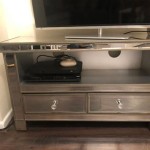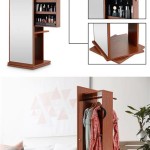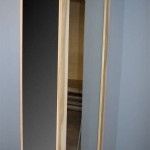How to Make a Frame for a Wall Mirror
A wall mirror can be a beautiful and functional addition to any room, enhancing the sense of space and reflecting light to brighten the interior. While many mirrors come ready-made with frames, creating a custom frame allows for personalization, ensuring the mirror complements the specific décor and style of a space. This article provides a comprehensive guide on how to make a frame for a wall mirror, covering material selection, construction techniques, and finishing methods.
Choosing the Right Materials
The selection of materials is a crucial first step in creating a mirror frame. The materials chosen determine the frame's aesthetic appeal, durability, and overall cost. The most common material for mirror frames is wood, but other options like metal, plastic, and even repurposed materials can be used depending on the desired outcome.
Wood: Wood offers a wide range of possibilities in terms of appearance and workability. Softwoods like pine are less expensive and easier to cut and shape, making them suitable for beginners. Hardwoods like oak, maple, and walnut provide greater durability and a more refined look, but they require more specialized tools and techniques. The choice of wood will significantly influence the frame's final appearance. Knotty pine creates a rustic charm, while a sleek hardwood finish lends a more contemporary feel. Consider the wood's grain pattern and color, as these will affect the overall design.
Metal: Metal frames offer a modern and industrial aesthetic. Aluminum is lightweight and corrosion-resistant, making it a good choice for bathrooms or other damp environments. Steel is stronger and more durable, but it is also heavier and more prone to rust if not properly treated. Metal frames require specialized tools for cutting and welding, so they are generally better suited for those with experience in metalworking. The types of metal finishes available range from brushed surfaces to powder-coated colors, offering a wide range of design possibilities.
Plastic: Plastic frames can be a cost-effective and lightweight option. PVC and other plastics are resistant to moisture, making them suitable for bathrooms or other areas with high humidity. Plastic frames are available in a variety of colors and finishes, and they can be easily cut and shaped with basic tools. However, plastic frames may not have the same aesthetic appeal or durability as wood or metal frames. Recycled plastics can also be used, offering an environmentally conscious option.
Repurposed Materials: Utilizing repurposed materials can add unique character and charm to a mirror frame. Old barn wood, reclaimed metal, or even seashells can be incorporated into the design. The possibilities are endless, and using repurposed materials can be a sustainable and creative way to create a one-of-a-kind frame. Before using repurposed materials, ensure they are clean, structurally sound, and properly treated to prevent any degradation.
Beyond the primary framing material, consider the necessary hardware, such as corner braces, hanging brackets, and fasteners. These components will contribute to the frame's structural integrity and ease of installation. The type of mirror to be framed also influences material choice, especially in terms of weight and dimensions. A large, heavy mirror will require a more robust frame construction.
Frame Construction Techniques
Constructing a mirror frame involves several steps, from measuring and cutting the materials to assembling and securing the frame. Accuracy in measurement and cutting is crucial for a professional-looking result.
Measuring and Cutting: Begin by accurately measuring the mirror's dimensions. The frame should be slightly larger than the mirror to allow for a small amount of play and to accommodate any mounting hardware. Determine the desired width of the frame. This will influence the overall appearance and the amount of mirror that is visible. Once the dimensions are determined, accurately cut the frame pieces to size. Using a miter saw or a miter box and hand saw is recommended for precise 45-degree angles for the corners. For straight cuts, a circular saw or table saw can be used. Accuracy in cutting is essential for a seamless and professional-looking frame.
Assembly: After cutting the frame pieces, assemble them using wood glue and fasteners. Apply wood glue to the mitered corners and clamp the frame together. Use corner clamps to ensure the corners are square and aligned. Reinforce the corners with nails, screws, or corner braces. For metal frames, welding or bolting is typically used. For plastic frames, adhesives or heat welding can be used. Ensure that the frame is securely joined and that the corners are strong and stable. Allow the glue to dry completely before proceeding to the next step. Inaccurate assembly can result in a warped or unstable frame, compromising both aesthetics and functionality.
Securing the Mirror: Once the frame is assembled, secure the mirror within the frame. This can be done using mirror clips, adhesive, or a combination of both. Mirror clips are small metal or plastic brackets that hold the mirror in place. They are typically screwed into the back of the frame. Adhesive, such as mirror mastic, can be used to bond the mirror to the frame. When using adhesive, apply it sparingly and evenly to avoid any visible squeeze-out. Be cautious to use mirror-safe adhesives that won't damage the mirror's backing. Some frames are designed with a rabbet, a groove cut into the inside edge of the frame, which allows the mirror to sit flush with the back. This provides additional support and a cleaner appearance. Ensure the mirror is securely fastened within the frame to prevent it from falling out.
Adding Support: Depending on the size and weight of the mirror, add additional support to the back of the frame. This can be done by attaching a plywood backing or adding cross braces. The backing provides additional stability and prevents the frame from warping or bending. Cross braces can be added to the back of the frame to reinforce the corners and prevent them from separating. Secure the backing or braces with screws or adhesive. Ensure the support structure is strong enough to handle the weight of the mirror and frame.
Finishing and Installation
Finishing and installation are the final steps in creating a mirror frame. The finish enhances the frame's aesthetic appeal and protects it from damage, while proper installation ensures the mirror is securely mounted to the wall.
Sanding and Preparation: Before applying any finish, sand the frame thoroughly to create a smooth surface. Use progressively finer grits of sandpaper, starting with a coarser grit to remove any imperfections and finishing with a fine grit to achieve a smooth texture. Remove any dust or debris with a tack cloth. For wood frames, apply a wood filler to any nail holes or imperfections. Allow the filler to dry completely and then sand it smooth. Proper preparation is essential for a professional-looking finish.
Applying the Finish: The choice of finish depends on the desired aesthetic and the material of the frame. For wood frames, options include paint, stain, varnish, and lacquer. Paint provides a solid color and can be applied with a brush, roller, or spray gun. Stain enhances the natural wood grain and can be applied with a brush or cloth. Varnish and lacquer provide a durable and protective finish. For metal frames, options include paint, powder coating, and clear coats. Paint and powder coating provide a solid color, while clear coats protect the metal from corrosion. For plastic frames, paint is the most common option. Apply the finish in thin, even coats, allowing each coat to dry completely before applying the next. Follow the manufacturer's instructions for the specific finish being used. Sand lightly between coats to remove any imperfections. Multiple coats of finish will provide greater durability and a more professional appearance.
Adding Hanging Hardware: Attach hanging hardware to the back of the frame. This can include D-rings, wire, or sawtooth hangers. The type of hardware used depends on the weight and size of the mirror. Position the hardware evenly on the back of the frame, ensuring it is securely attached. Use screws or nails to fasten the hardware to the frame. Make sure the hardware is strong enough to support the weight of the mirror and frame. Incorrectly installed hanging hardware can result in the mirror falling off the wall.
Installation: Locate the desired position for the mirror on the wall. Use a level to ensure the mirror is hung straight. Mark the location of the hanging hardware on the wall. Install appropriate wall anchors for the type of wall material (drywall, plaster, wood, etc.). Hang the mirror on the wall, ensuring it is securely attached to the wall anchors. Double-check that the mirror is level and stable. For large or heavy mirrors, it may be necessary to have assistance during installation. Improper installation can result in damage to the mirror or the wall, or even personal injury.
By carefully following these steps, individuals can create a custom frame for a wall mirror that complements their décor and adds a personal touch to their space. The process involves careful material selection, precise construction techniques, and meticulous finishing, resulting in a beautiful and functional piece of art.

15 Creative Diy Mirror Frame Ideas Home Decor Mirrors Projects

Diy Mirror Frame Ideas To Enhance Your Bathroom

How To Build A Mirror Frame Simple Woodworking

15 Diy Mirror Frame Ideas For Stunning Home Decor

How To Make An Easy Diy Round Mirror Frame Step By Instructions Homify Marcos Para Espejos Espejo

How To Make A Custom Tiled Mirror The Stonybrook House

Diy Rustic Mirror Houseful Of Handmade

How To Make A Diy Wood Mirror Frame Rock Solid Rustic

Diy Farmhouse Mirror With Dollar Sunflowers A Erfly House

Diy Anthropologie Mirror Knock Off For Only 10 Crafting My Home








